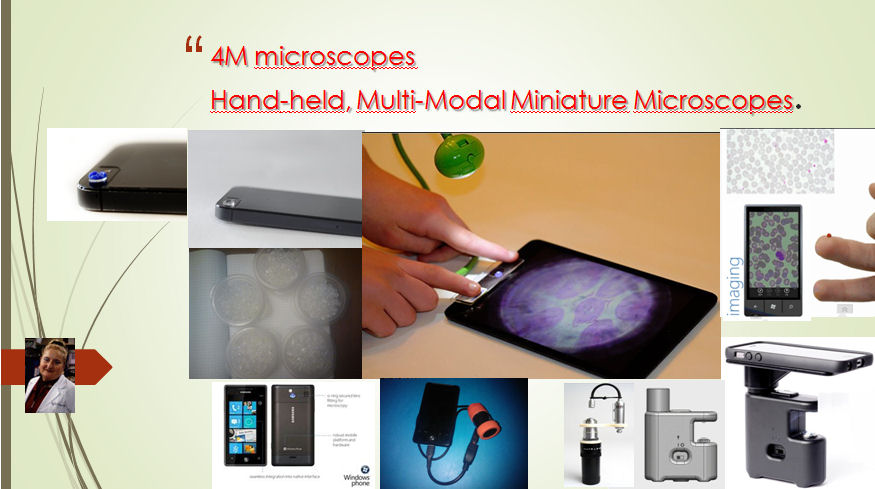During this year it has become a new several hand-held microscopes based on mobile phones to diagnose malaria.
The main drawnback of those systems are the illumination problems, color aberrations in the case of a single image (that may alter the color code on which the diagnosis is based) as well as electronic noise of sensors. Furthermore, for distant diagnostic purposes, the main drawnback in tele-pathology is the sampling problems as clearly specify in the Handbook of telemedicine regarding minimal requirements for telepathology.
This is the reason why telepathology is based on whole slide (WS) scanning. The resulting image is of a huge size containing several Gigabytes which is innoperative for transmission unless we use intelligent multichannel compression algorithms that had been tested for QoI (quality of image) diagnosis.
That was the reason why we developped in 2007 the so called SSVS (small size virtual slide) capable of being handled with hand-held devices improving the resolution of the image and illuminations problems, allowing a digital zooming ideal for smartphones. Diagnostic criteria of image quality have been defined by us.


